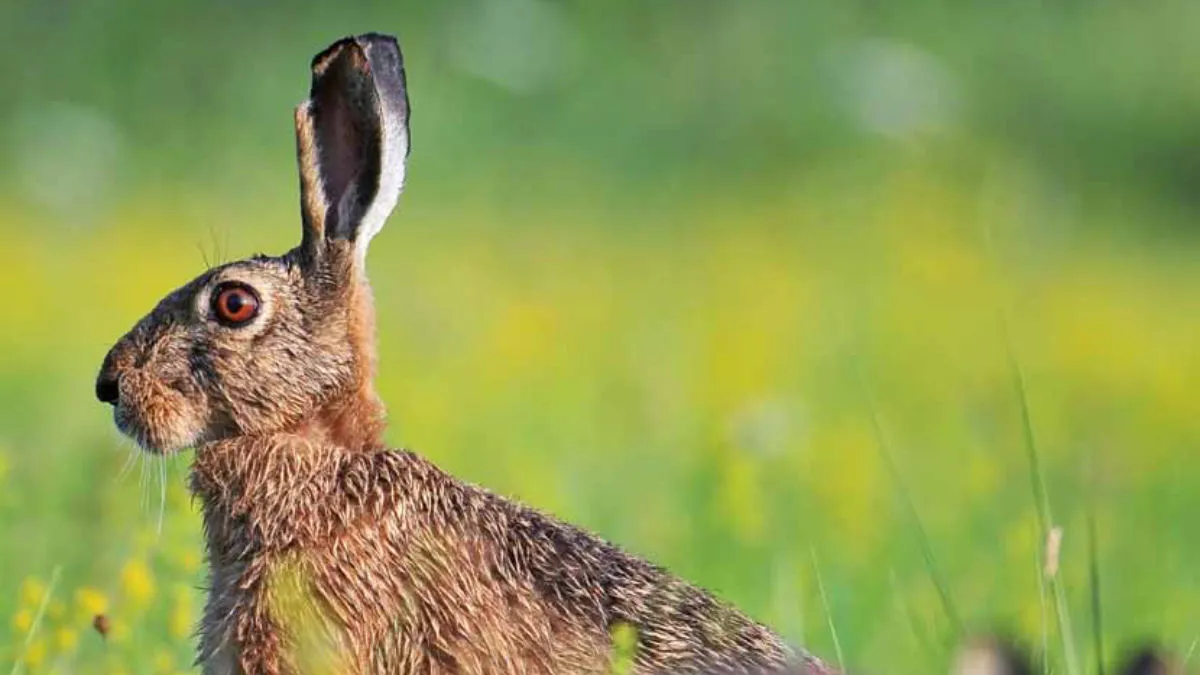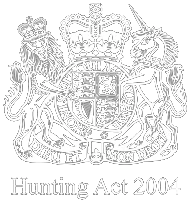
Hare hunting was carried out using several different types of scent hounds: Beagles, Harriers and Basset hounds. Hares were hunted on horseback by Harriers packs and on foot by Beagle and Basset hound packs. The hare hunting season for Harrier packs started at the end of August and ran until March and the hunting season for Beagle packs and Basset hound packs started in September and October respectively and ended in March.
The hunting day began with the gathering of the hunt at the meet which would have been arranged well in advance. The huntsman and one or more of the whippers-in would be wearing a uniform so as to be easily identified. The uniform consisted of a hunt coat, normally green, white breeches, caps or riding hats, riding boots for Harrier packs or training or hockey shoes for Basset and Beagle packs. The huntsman would give instructions to his whippers-in and other designated followers to position themselves so that hounds could be kept away from roads and from areas where livestock could be disturbed. The huntsman would move off with the hounds to draw for their first hare. Hounds would be cast over open ground and several miles may be covered before a hare was found. Finding a hare was dependent on a number of factors including the skill of the huntsman and hounds, the availability of hares and scenting conditions which was dependent on weather conditions and the type of terrain. Each hound would be seen trying to pick up any small trace of scent or “drag” where a hare might have been feeding; the hounds may initially sight a hare and then hunt her by scent. Alternatively, the hare may have been seen by one of the whippers-in or followers which would be indicated to the huntsman by raising a hat or arm in the air and pointing in the direction of the hare. The huntsman would then take the hounds over to the signaller where the hounds would pick up the scent.
On poor scenting days the hounds may have found it difficult to hold the line for more than a few fields and hunt slowly before running out of scent. On good scenting days the hounds were able to run fast, holding the scent over several miles. The hunt followers would follow at a discreet distance so they did not interfere with the hounds. The hounds would be encouraged to hunt with voice and horn calls made by the huntsman.
A description of a typical hare hunt was given by Admiral Sir James Eberle, Chairman of the Association of Masters of Harriers and Beagles (AMHB), in a joint submission to the Burns inquiry in 2000 by the AMHB and the Masters of Basset Hounds Association:
“After a while, the pack will be most likely to lose the scent and will stop and cast themselves around to recover the line. This is known as a ‘check’, for which there are numerous reasons. The hare may have turned sharply, in which case the hounds may have over-run the line. The scent may have failed because the hare has run over freshly manured ground or ground that has been foiled by sheep. The hare may have been ‘headed’ (made to ‘alter course’) by, for instance, running into straying hunt followers or unexpectedly into a herd of cattle. Under such conditions, a hare will lose much of its scent, making it difficult to continue the hunt. if the hounds do not themselves recover the line, the huntsman will try to assist by ‘casting’ the pack in the direction which his experience tells him that the hare may have taken. It also often happens that the hare has stopped and hidden itself (‘clapped’) and must be re-found. During a cast, which may last five or ten minutes – or even longer if the hare has clapped – it is not unusual that a different hare will get up and hounds will ‘change’. Under these conditions, hounds will be unlikely to catch their original hunted hare. Thus the afternoon’s hunting continues. The normal hunt will involve a number of such ‘checks’. It is only on the few occasions when there is a good scent on clean ground and there is no outside interference, will there be a continuous and unbroken pursuit by hounds, unaided by their huntsman, from ‘find’ to kill’.”
If the hare had not managed to evade the hounds their superior stamina would outstrip her and as she tired the hounds would eventually catch up and kill her. Hares tend to stick to their own territory and do not venture onto new ground and as a result hare hunting normally took place in a limited area, of not more than two miles square. While a few straight runs have been known the hare tended to run in a wide circle. Sometimes runs were fast with almost no checks in which case a hunt lasted no more than thirty minutes or so. More typically, a single hunt, whether ending in a kill or not could have lasted up to two hours.

